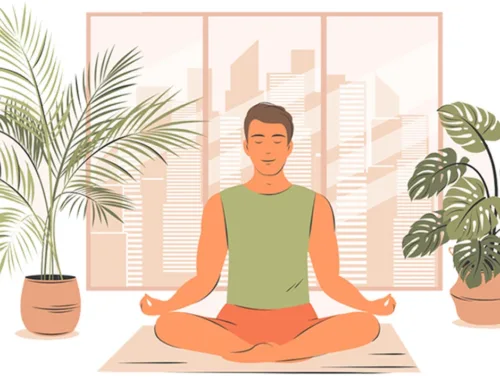The intertwining relationship between yoga and mindfulness is a harmonious journey that goes beyond physical postures, extending into mental and spiritual well-being. By seamlessly blending these practices, individuals can experience a profound connection that enriches their lives holistically. Let us look at the connection between yoga and mindfulness.
Understanding Mindfulness in Yoga:
Yash Birla, the spiritualist and industrialist, says that mindfulness is the practice of being fully present in the current moment, cultivating awareness without judgment. In the context of yoga, mindfulness involves bringing attention to the breath, sensations, and thoughts during each pose. The deliberate focus on the present moment enhances the mind-body connection, fostering a deeper experience of the practice.
Mindful Breath and Movement:
The cornerstone of mindfulness in yoga lies in conscious breathing. Linking breath with movement, as done in Vinyasa or Ashtanga styles, enhances the mind’s focus, calming the nervous system. The rhythmic inhalation and exhalation create a moving meditation, where practitioners immerse themselves in the flow of the practice. This synchronization of breath and movement not only deepens the physical postures but also serves as a gateway to mindfulness, explains Mr Birla.
Yoga as Moving Meditation:
Yoga, at its essence, is a moving meditation, says Yash Birla. The deliberate and controlled movements, combined with focused breath, transform each pose into a meditative experience. This moving meditation becomes a powerful tool for cultivating mindfulness on and off the mat. As practitioners synchronize breath with poses, they enter a state of heightened awareness, transcending the distractions of the external world and fostering a sense of inner peace.
Mindfulness in Asana Practice:
Mindfulness in yoga extends to the physical postures or asanas. Instead of mechanically moving through poses, practitioners are encouraged to bring conscious attention to the alignment, sensations, and energy flow within each posture. This mindfulness approach not only enhances the effectiveness of the practice but also minimizes the risk of injury by promoting body awareness.
Emotional Awareness and Mindfulness:
Yash Birla believes that mindfulness in yoga extends beyond the physical realm to emotional well-being. As individuals navigate challenging poses or confront discomfort, mindfulness encourages observing thoughts and emotions without attachment or judgment. This non-reactive awareness allows practitioners to cultivate emotional resilience, acknowledging and releasing stress or tension, contributing to improved mental health.
Yoga Nidra and Mindful Relaxation:
Yoga Nidra, or yogic sleep, is a powerful practice that exemplifies the fusion of yoga and mindfulness. This guided meditation induces a state of conscious relaxation, systematically guiding awareness through different parts of the body. Practitioners experience profound rest and heightened awareness simultaneously, unlocking deep-seated tensions and promoting mental clarity. Yoga Nidra serves as an embodiment of mindfulness, offering a rejuvenating experience that transcends the physical and mental realms.
Life Beyond the Mat: Integrating Mindfulness:
The mindfulness cultivated on the yoga mat naturally extends into everyday life. As practitioners become adept at observing the breath and staying present during challenges on the mat, these skills translate into real-world situations. Mindfulness becomes a tool for managing stress, enhancing focus, and fostering a sense of calm amid life’s demands.
In conclusion, the connection between yoga and mindfulness is a symbiotic relationship that transforms the practice from a mere physical exercise into a holistic journey of self-discovery and well-being. Yash Birla says that by integrating mindfulness into every breath and movement, yoga becomes a transformative experience that extends far beyond the mat, enriching the lives of those who embrace its profound connection.






[…] by cultivating mindfulness during meals. Practice yoga breathing techniques (pranayama) before eating to enhance awareness. […]
[…] meditation and mindfulness practices in yoga can heighten one’s intuition and self-awareness. This enhanced sense of intuition often leads […]
[…] Practice stress management techniques such as deep breathing exercises, meditation, yoga, tai chi, mindfulness, and relaxation techniques to promote relaxation, reduce anxiety, and improve resilience to […]
[…] and Movement for Mind-Body Connection: Introduce yoga and other mindful movement practices to help youth cultivate a deeper connection between mind, body, and spirit, suggests Yash Birla. […]